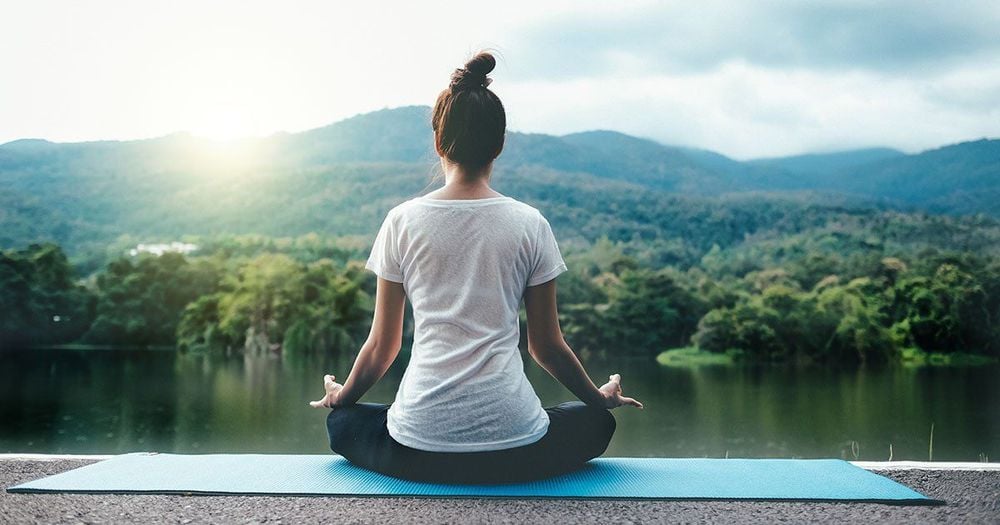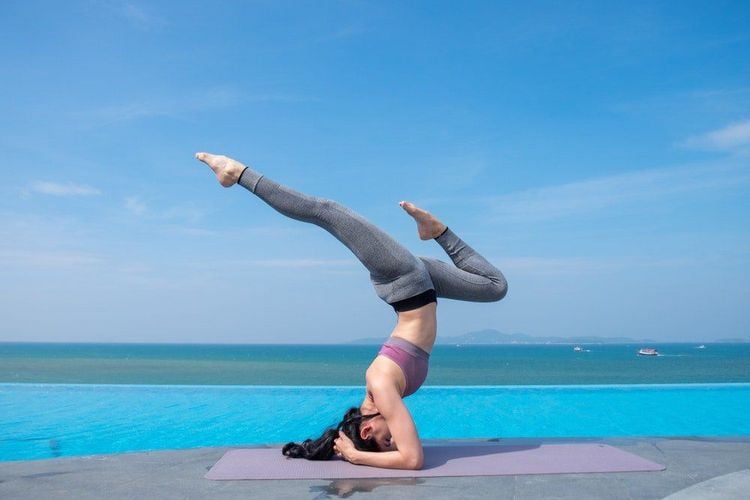This is an automatically translated article.
Stress and anxiety are everywhere, there are many measures to help you relieve this situation. Yoga is a mental and physical practice that combines physical postures, controlled breathing, and meditation or relaxation to help reduce stress, lower blood pressure, and lower heart rate.
1. Benefits of practicing Yoga
Yoga is considered as one of the types of approaches to complementary and integrative medicine. Yoga is a collection of physical and mental disciplines that can help you achieve serenity of body and mind. This can help you relax and manage stress and anxiety.
The potential health benefits of yoga include:
1.1 Flexibility Yoga poses work by stretching your muscles, They help you move better, less tight and fatigued.
At any level of yoga, you can benefit from it, it's just a matter of how fast or slow it is. In one study, people improved their flexibility by up to 35% after just 8 weeks of yoga.
1.2 Better Body Yoga helps develop inner awareness. It focuses your attention on your body's ability to be in the present moment. At the same time, it helps to develop breathing, strength of mind and body. Yoga is not about looks.
Yoga studios usually don't have mirrors. This makes it possible for people to focus their awareness inwards rather than on how they pose or what the people around them look like. Surveys have found that yoga practitioners are more aware of their bodies than non-yogis. They are also more satisfied and less critical of their bodies. For these reasons, yoga has become an integral part of eating disorder treatment and programs that promote positive body image.
1.3 Eat selectively Yoga has been shown to increase mindfulness, not only in the classroom but also in other areas of one's life. Researchers describe mindful eating as non-evaluative awareness of the physical and emotional sensations associated with eating such as:
Eating even when full (inhibition); Be aware of the appearance, taste, and flavor of food; Eating in response to environmental cues, such as seeing or smelling food; Eating when sad or stressed (emotional eating); Eat when distracted by other things. They also claim that people who practice yoga are more conscious eaters. Both two years of yoga practice and number of minutes per week were associated with better eating and mental health scores. Practicing yoga helps you become more aware of how your body feels. This heightened awareness can translate to mealtime as you savor every bite or sip, and notice how food smells, tastes, and feels in your mouth.

Tập yoga đã được chứng minh là giúp tăng cường chánh niệm
1.4. Promote weight loss and maintain it People who practice yoga and eat are more mentally in tune with their bodies. They may be more sensitive to hunger and satiety cues.
Researchers found that people who practiced yoga for at least 30 minutes once a week for at least four years gained less weight in middle age. Overweight people actually lose weight. In general, people who practice yoga will have a lower body mass index (BMI) than those who do not practice yoga. The researchers suggest that this is due to mindfulness. Mindful eating can lead to a more positive relationship with food and eating
1.5. Physical Enhancement Yoga is known for its ability to calm stress and anxiety in the mind and body. But it can also have an impact on a person's ability to exercise.
Researchers studied a small group of people who were sedentary and had not practiced yoga before. After eight weeks of practicing yoga at least twice a week for a total of 180 minutes, the participants had better muscle strength and endurance, and better cardiac and respiratory flexibility.
1.6. Cardiovascular benefits Several small studies have found that yoga has a positive effect on cardiovascular risk factors : Helps lower blood pressure in people with hypertension . It is possible that yoga helps restore "sensitivity of the receptors". This helps the body sense an imbalance in blood pressure and maintain balance.
Another study found that yoga improved dyslipidemia in healthy patients as well as in patients with coronary heart disease. It also reduces excessive blood sugar in people with non-insulin dependent diabetes and reduces their need for medication. Yoga is now being included in many cardiovascular rehabilitation programs due to its cardiovascular and stress-reducing benefits.

Yoga được biết đến với khả năng làm dịu căng thẳng và lo lắng trong tâm trí và cơ thể
2. How does yoga help relieve stress?
Yoga has long been known to be a great stress reliever. Yoga combines many popular stress-reduction techniques, including exercise and learning to control your breath, clear your mind, and relax your body.
Hatha Yoga is the physical practice of yoga poses. There are different types of hatha yoga: Some are slow and more focused on stretching, others are faster and more practicable. If you're looking to relieve stress, there's no such thing as a superior yoga style, so choose a yoga style that's right for your fitness level and personality. Any exercise helps relieve stress by keeping the body healthy and releasing endorphins, natural hormones that make you feel better. Yoga also relieves stress through muscle stretching. The yoga stretch helps release tension from problem areas, including the hips and shoulders, and relieves low back pain.
Pranayama, or breathing activity, is an important part of any yoga practice and a transformative part of life. Just learning to take deep breaths and realizing that this can be a quick way to combat stressful situations can be amazingly effective
Our minds are constantly on the move, racing from thinking about plans for the future. All this mental work is stressful and exhausting. Yoga offers several techniques for taming qi. Each breath is inextricably linked with the present moment. Focusing on each inhalation and exhalation to the exclusion of other thoughts is one way to clear the mind. This is also a basic meditation technique. Additionally, performing yoga poses, or asanas, also acts as a form of meditation. These poses are very relaxing and must be done with great concentration, leaving all other thoughts and worries aside, giving your brain a much-needed rest.
A yoga session always ends with 5-10 minutes of relaxation in savasana - corpse pose. While this exercise relaxation can be difficult at first, it ultimately serves the purpose of total liberation for both body and mind. Savasana brings you back into the world feeling refreshed and armed with the tools to combat the stress of your daily life. Yoga Nidra is a practice that offers the opportunity for longer, deeper periods of relaxation and an introduction to meditation, which can also be a great stress reliever.
Please dial HOTLINE for more information or register for an appointment HERE. Download MyVinmec app to make appointments faster and to manage your bookings easily.
References: health.harvard.edu, webmd.com, verywellmind.com, mayoclinic.org












